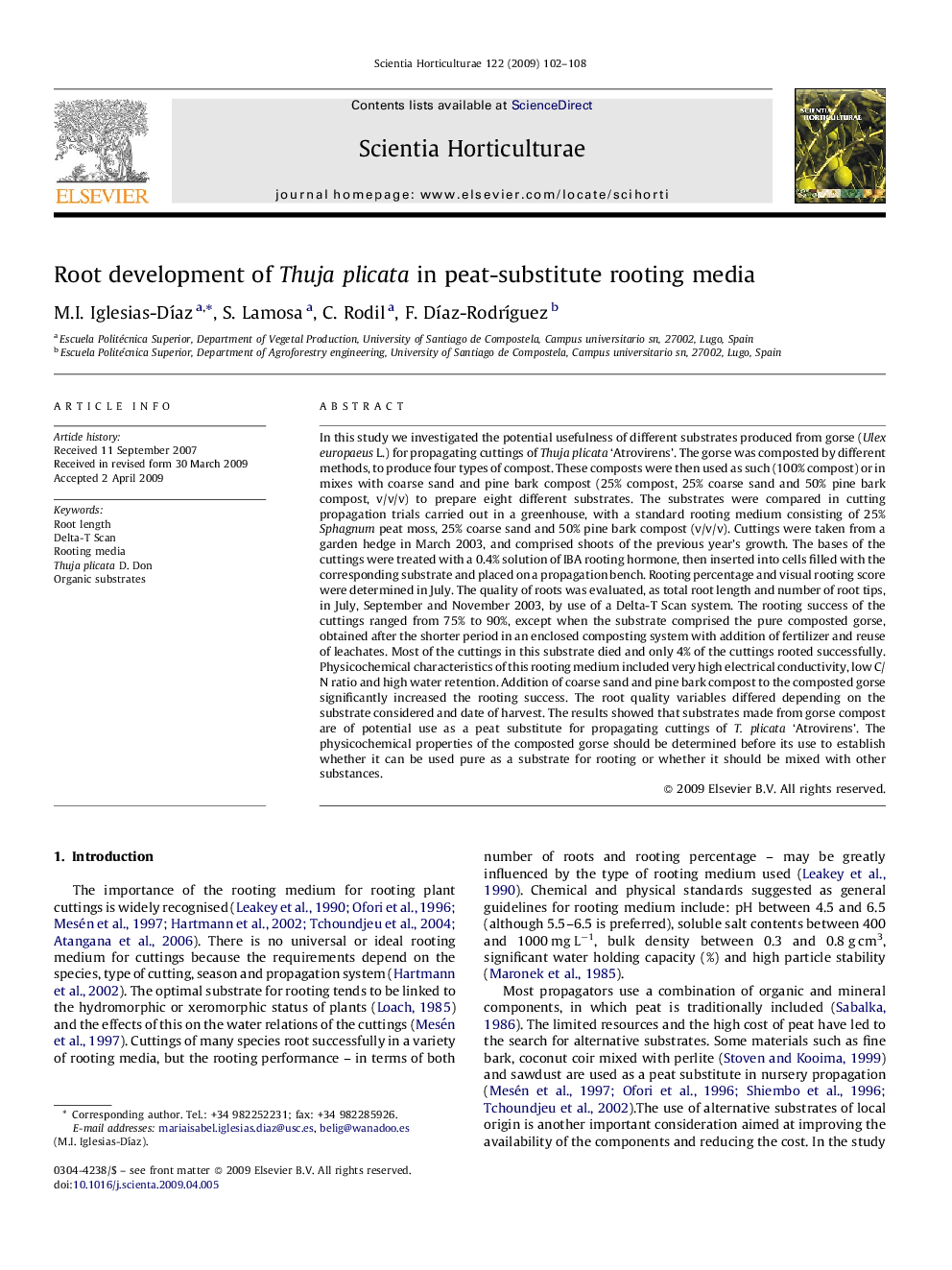| Article ID | Journal | Published Year | Pages | File Type |
|---|---|---|---|---|
| 4569060 | Scientia Horticulturae | 2009 | 7 Pages |
In this study we investigated the potential usefulness of different substrates produced from gorse (Ulex europaeus L.) for propagating cuttings of Thuja plicata ‘Atrovirens’. The gorse was composted by different methods, to produce four types of compost. These composts were then used as such (100% compost) or in mixes with coarse sand and pine bark compost (25% compost, 25% coarse sand and 50% pine bark compost, v/v/v) to prepare eight different substrates. The substrates were compared in cutting propagation trials carried out in a greenhouse, with a standard rooting medium consisting of 25% Sphagnum peat moss, 25% coarse sand and 50% pine bark compost (v/v/v). Cuttings were taken from a garden hedge in March 2003, and comprised shoots of the previous year's growth. The bases of the cuttings were treated with a 0.4% solution of IBA rooting hormone, then inserted into cells filled with the corresponding substrate and placed on a propagation bench. Rooting percentage and visual rooting score were determined in July. The quality of roots was evaluated, as total root length and number of root tips, in July, September and November 2003, by use of a Delta-T Scan system. The rooting success of the cuttings ranged from 75% to 90%, except when the substrate comprised the pure composted gorse, obtained after the shorter period in an enclosed composting system with addition of fertilizer and reuse of leachates. Most of the cuttings in this substrate died and only 4% of the cuttings rooted successfully. Physicochemical characteristics of this rooting medium included very high electrical conductivity, low C/N ratio and high water retention. Addition of coarse sand and pine bark compost to the composted gorse significantly increased the rooting success. The root quality variables differed depending on the substrate considered and date of harvest. The results showed that substrates made from gorse compost are of potential use as a peat substitute for propagating cuttings of T. plicata ‘Atrovirens’. The physicochemical properties of the composted gorse should be determined before its use to establish whether it can be used pure as a substrate for rooting or whether it should be mixed with other substances.
